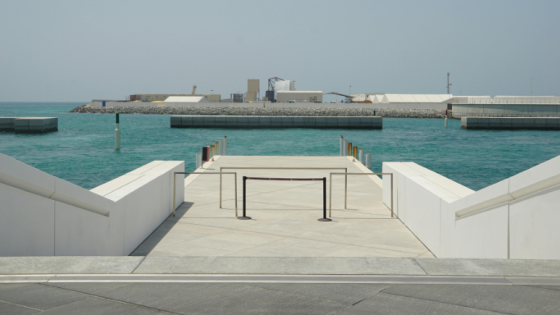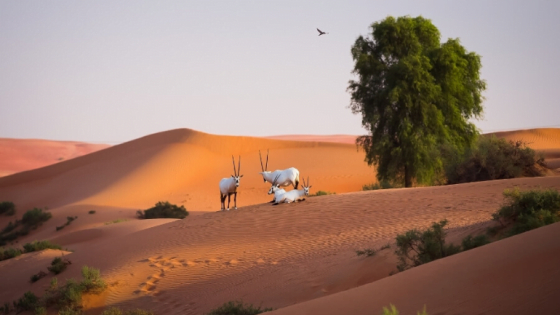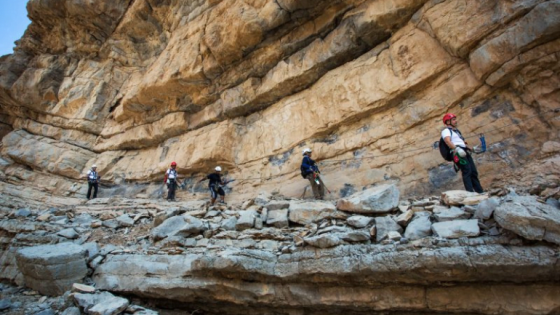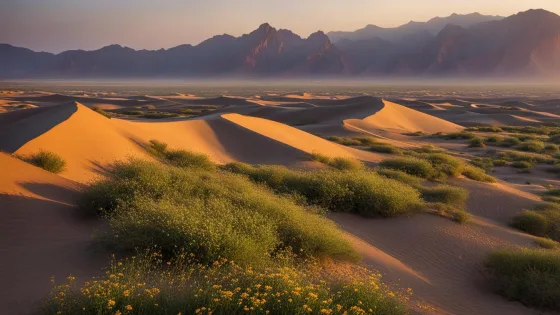Contents
- 1 UAE Water Systems
- 2 UAE Water Systems and Resources
- 3 Non-conventional Water Sources
- 4 Water Security Strategy 2036
- 5 Innovative Desalination Plants
- 6 Dams in the United Arab Emirates
- 7 Supporting Global Efforts for Potable Water
- 8 A Detailed Guide to Home Water Filtration Systems in the UAE
- 9 Selecting the Ideal Home Water Filter
- 10 Reverse Osmosis Water Purifiers and Drinking Water Filter Systems
- 11 The Best Under-Sink Reverse Osmosis Water Purifier System for Your Home
UAE Water Systems can be divided into two primary categories: conventional and non-conventional. Conventional sources include surface water, such as aflaj systems, springs, and dams, as well as groundwater from both shallow and deep aquifers. Non-conventional sources encompass desalinated water, treated wastewater, and cloud seeding. We will also dive into drinking water filter systems in UAE, water purifiers in Dubai, reverse osmosis water treatment systems, desalination systems, and water filtration systems like Aqua Life water purification.
Read more: UAE Geographic Information Systems: Pioneering Geographic Intelligence and Technology
UAE Water Systems
The UAE does not have access to any shared surface waters, which means it lacks water agreements or treaties with neighboring countries. However, as part of the Gulf Cooperation Council (GCC), which shares underground aquifers, there is a need for collaborative efforts to manage these resources sustainably. At present, there are no treaties or agreements in place to regulate the use of these aquifers.
The following sections offer a detailed examination of the UAE’s water systems, including various water purification technologies and guidance on selecting the most suitable purification system to meet individual requirements. Home water purification systems can help consumers reduce expenses associated with bottled water while also providing an environmentally friendly solution to conserve resources.
Read more: UAE Soil Conservation: Emirates Global Climate Initiative with Sadhguru to Save Soil
UAE Water Systems and Resources
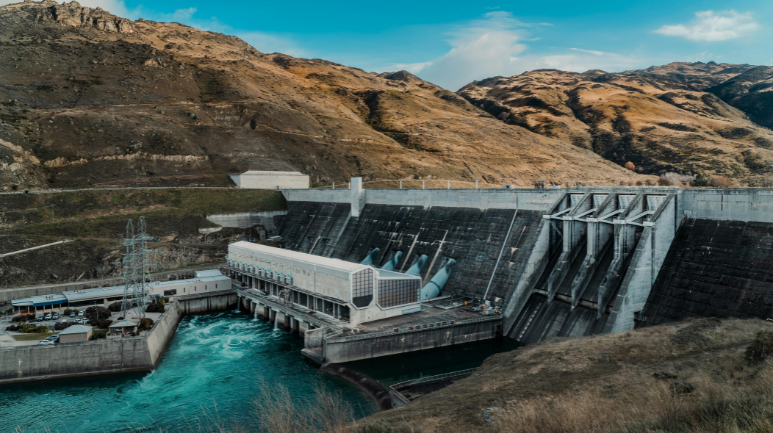
UAE Water Systems are a vital aspect of the country’s strategy to ensure sustainable water management in a largely arid environment. With limited natural surface water sources, the UAE has harnessed a blend of conventional and innovative non-conventional methods to meet its growing demand. From ancient Aflaj irrigation systems to cutting-edge desalination technologies, the approach is both diverse and adaptive. The focus on advanced water treatment and filtration solutions not only addresses the immediate needs of residents but also promotes long-term environmental sustainability, making every drop count in this resource-sensitive region.
Surface Water
Surface water in the UAE is minimal and primarily consists of floodwater, rainwater held in dams, a few small streams, ponds, and spring water. These water sources may be either stagnant or flowing, depending on land gradients, and are replenished through rainfall or groundwater. Given the country’s location in an arid region, rainfall is scarce, and floodwaters often infiltrate the ground, particularly in sedimentary areas.
Therefore, it is essential to construct dams for capturing rainwater and storing surface water, which also helps recharge underground aquifers, despite much of it being lost to significant evaporation. The average yearly surface water flow through the wadis (valleys) ranges from 23 million cubic meters (MCM) to 138 MCM.
Groundwater
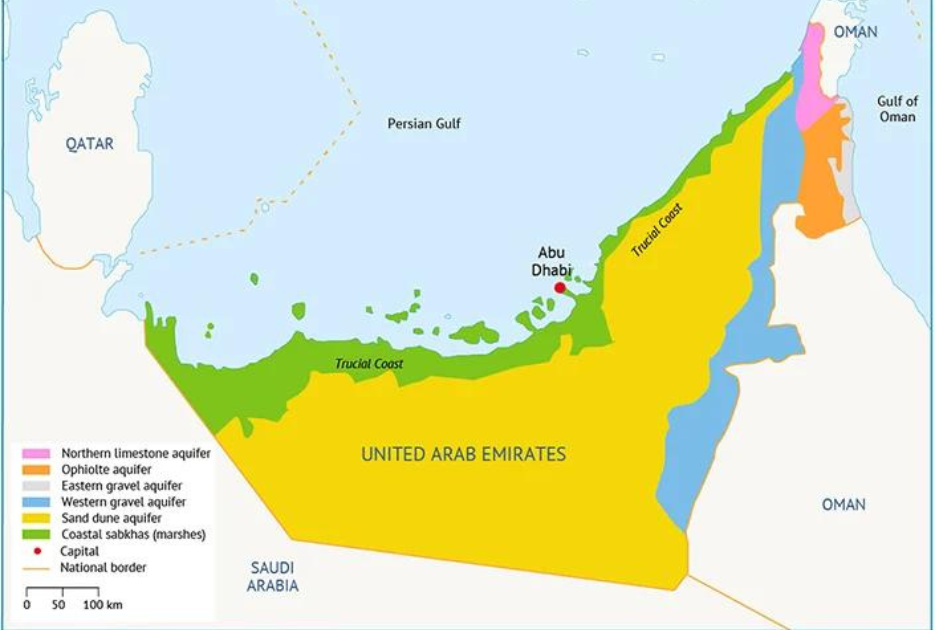
Groundwater represents the primary natural water resource in the UAE. The total groundwater volume is substantial, estimated at around 640 billion cubic meters (BCM), yet only about 3% (approximately 20 BCM) is classified as fresh water. In the UAE’s dry climate, groundwater is a crucial and valued resource for municipal and rural needs, environmental conservation, and supporting social and economic growth.
However, the majority of groundwater in the UAE is brackish. These groundwater resources can be categorized into renewable sources, such as shallow aquifers, and non-renewable sources, like deep aquifers. Groundwater is found in aquifers within the Bajada region in the eastern part of the country, which include alluvial fan deposits along the base of the Oman and Ras Al Khaimah mountains and cover extensive areas.
The upper aquifer comprises gravel, sand, and silt, while the lower aquifer consists of limestone, dolomite, and marl. The thickness of both aquifers varies between 200 to 800 meters. Additionally, the Dammam and Umm er-Radhuma aquifers in the western desert areas contain highly saline water. The recharge rate of shallow aquifers is heavily reliant on rainfall and surface runoff, which can fluctuate significantly from year to year.
Due to the region’s high evaporation rates and surface runoff in mountainous areas, only about 10-14% of the total precipitation filters down to recharge the shallow aquifers. In recent years, efforts to improve aquifer conditions have been made by reducing groundwater extraction to sustainable levels.
However, a complete recovery of these resources will require several generations. Measures to manage groundwater use have begun, but additional actions are still necessary to align extraction rates with sustainability goals. A comprehensive approach to sustainable groundwater management has also been implemented, including robust monitoring and regulatory frameworks, along with the conservation of traditional water systems like Aflaj.
High summer evaporation rates contribute to the buildup of salts in the root zone. Excess irrigation water sinks deep into the soil, transporting these accumulated salts to the aquifer, which exacerbates the issue of groundwater decline.
Read more: UAE Conservation Biology: United Arab Emirates Winning Wildlife Conservation Efforts
Non-conventional Water Sources
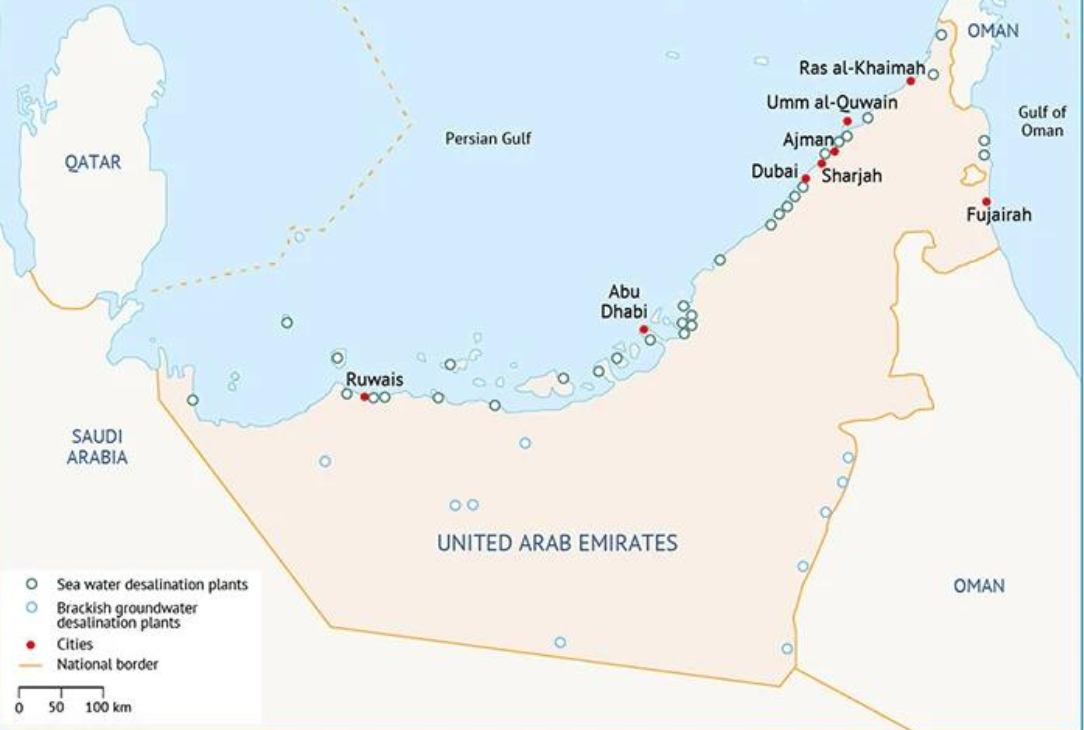
UAE Water Systems increasingly depend on non-conventional methods to tackle water scarcity sustainably. Innovations like desalination, treated wastewater, and cloud seeding have significantly changed how water is sourced and managed. These advanced technologies not only enhance the overall water supply but also encourage environmentally friendly practices, enabling the UAE to fulfill its growing water needs while preserving natural resources for future generations.
Desalination
To satisfy both the qualitative and quantitative standards for drinking water, domestic supplies in the UAE primarily rely on desalinated water, which accounts for about 99% of the total supply. This water is either used directly or mixed with groundwater. Following Saudi Arabia, the UAE has the second-largest desalination capacity in the world.
Most desalination plants utilize co-generation multi-stage flash (MSF) technology or multiple-effect distillation (MED), while only two facilities use reverse osmosis (RO) technology. As of 2015, 33 major desalination plants are operating in the UAE. The relatively low cost of desalinated water makes it an attractive option for industrial demand, as industries have shown a willingness to pay higher prices compared to domestic and agricultural rates.
Renewable energy is crucial for reducing the costs associated with desalinated water. The UAE is at the forefront of advancements in green technology. With food and water security being paramount concerns—given that the country imports over 90% of its food—the UAE aspires to increase its renewable energy usage by 24% by 2021. Water demand is projected to rise by about 30% by 2030, and it is important to note that seawater desalination necessitates ten times more energy than producing water from surface sources.
Treated Wastewater
Treated wastewater is a critical alternative for addressing current water needs and alleviating the long-term supply-demand imbalance. The establishment of wastewater treatment facilities and the expansion of urban sewage systems have led to the availability of large volumes of treated wastewater. Environmental considerations dictate that wastewater is treated either fully or partially based on its intended use.
Currently, the UAE operates modern treatment facilities equipped with tertiary and advanced treatment capabilities. The treated water is primarily utilized for urban applications, such as irrigating parks and landscaping along highways.
Municipalities are responsible for the development and management of sewage systems, the establishment of stormwater collection networks, and the reuse of treated wastewater. However, approximately half of the treated effluents are released into the Arabian Gulf. This situation arises from several factors, including:
- Insufficient transmission and distribution networks to deliver treated water to end-users, primarily forest areas and private entities like golf resorts.
- Reduced demand stemming from the financial downturn between 2008 and 2014.
- Cultural barriers, particularly the challenge of persuading farmers to utilize recycled water.
Currently, the UAE has about 79 medium to large wastewater treatment plants, with treated wastewater reaching approximately 615 million cubic meters (MCM) in 2013, representing around 14% of the total water resources utilized.
Cloud Seeding
The UAE is at the forefront of cloud seeding and artificial rainmaking in the MENA region, having invested 2 million dirhams (approximately $550,000) in cloud seeding operations in 2015. Typically conducted over the eastern mountain ranges adjacent to Oman, cloud seeding aims to boost water levels in local aquifers and reservoirs. However, some operations have also been performed in urban areas. Although cloud seeding has been successful in increasing precipitation, a thorough cost-benefit analysis is essential to determine its viability as a water source in comparison to other options like desalination or conservation initiatives.
Read more: UAE Climatic Zones: Knowledge Portal to Dubai’s Weather
Water Security Strategy 2036
The UAE Water Security Strategy 2036 is designed to ensure sustainable and continuous access to water under both normal and emergency conditions. This comprehensive strategy takes a national approach, incorporating all aspects of the water supply chain and engaging various entities and authorities involved in managing water resources. The goals of the strategy include:
- Implementing integrated management of water resources by reducing overall demand for water by 21%.
- Raising the water productivity index to USD 110 per cubic meter.
- Significantly enhancing water-use efficiency across all sectors while maintaining sustainable withdrawals and supply of freshwater to combat water scarcity and reduce the number of individuals affected by it by decreasing the water scarcity index by three degrees.
- Improving water quality through pollution reduction, eliminating waste dumping, and minimizing the release of hazardous substances, while aiming to increase the recycling and safe reuse of treated water to 95%.
- Guaranteeing universal and equitable access to safe and affordable drinking water for all by expanding national water storage capacity.
The National Water and Energy Demand Management Program seeks a 40% efficiency improvement in the three most energy-intensive sectors in the UAE: transportation, industry, and construction. This program consists of three key components: energy, water, and consumption rationalization.
Read more: UAE Tectonic Plates: Understanding Arabian Tectonic Movements and Earthquake Records
Innovative Desalination Plants
Given its limited natural freshwater resources, the UAE predominantly relies on thermal desalination technology to convert seawater into drinking water. Currently, a significant portion of the country’s potable water—42% of overall water requirements—comes from approximately 70 major desalination plants, responsible for around 14% of the global production of desalinated water.
To meet long-term water demands sustainably, the UAE must explore innovative desalination solutions. Integrating desalination technologies with renewable energy sources presents one potential approach. The UAE’s water supply is primarily sourced from desalination processes, which require electricity for reverse osmosis or utilize electricity generation by-products through multiple-effect distillation (MED) and multiple-stage flash distillation (MSF).
According to the State of Energy Report 2015, water demand surged significantly, with a growth rate of 35.8% from 2008 to 2012. The combined capacity for desalinated water and groundwater reached 1,585 million imperial gallons per day, while annual water production totaled 393,878 million imperial gallons. Notable desalination facilities in the UAE include:
- Shuweihat S2 Power and Water Plant in Abu Dhabi: This plant has an electricity production capacity of 1510 megawatts (MW) and can generate 100 million imperial gallons per day (MIGD) of water.
- Jebel Ali Power Station in Dubai: This is the largest power and desalination facility in the UAE, employing six gas turbines to produce 2060 MW of electricity and 140 MIGD of water.
- F2 Plant in Fujairah: This facility is a greenfield power generation and seawater desalination plant with a power capacity of 2850 MW and water production capabilities of 230 MIGD.
Dams in the United Arab Emirates
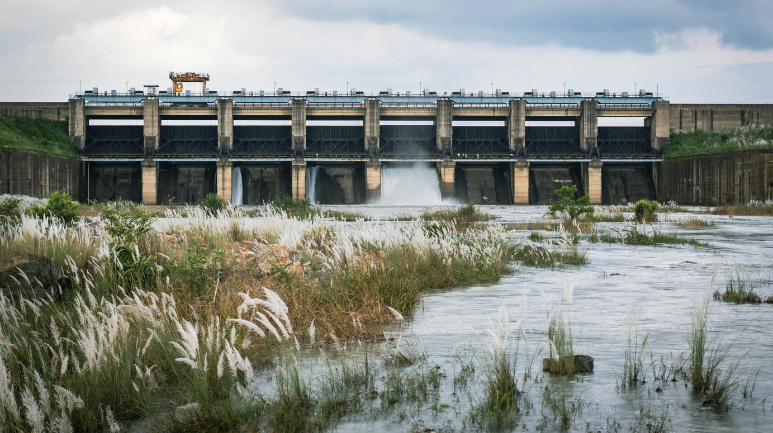
The UAE has placed significant emphasis on the construction of dams and rainwater harvesting initiatives. These dams play a crucial role in flood protection and help mitigate flow risks, while also enhancing the quality and quantity of water within the aquifer by increasing groundwater recharge rates. Notable dams in the UAE include:
- Wadi Al Beeh Dam (Length: 575 meters, Height: 18 meters): Situated in the northern part of Ras Al Khaimah (RAK) in Al Beeh Wadi, this dam is designed to replenish underground water supplies, providing water to the Al Burairat and Al Hamraniya areas in RAK.
- Wadi Ghalfa Dam (Length: 235 meters, Height: 8 meters): Located in the Masfout region within Wadi Ghalfa, this dam serves the agricultural sector and is constructed to enhance groundwater recharge.
- Wadi Wareaa Dam (Length: 367 meters, Height: 33 meters): Found in the eastern agricultural area of Wadi Wareaa, this dam originates from Masafi Hill and flows into the Gulf of Oman. It aims to recharge groundwater and protect surrounding regions from flooding, serving Al Badiya and Khor Fakkan.
- Wadi Basira Dam (Length: 885 meters, Height: 8 meters): This dam is positioned in the eastern agricultural region of Wadi Basira and serves to enhance the groundwater supply in Dibba while providing flood protection.
- Wadi Ham Dam (Length: 2800 meters, Height: 16 meters): Located in Fujairah, in the eastern part of the UAE, this dam is built to recharge underground water, offer flood protection, and improve water quality, benefiting local areas in Fujairah and Kalba.
- Wadi Azan Dam (Length: 110 meters, Height: 10 meters): A smaller dam located in the northern agricultural area of Wadi Azan, its purpose is to control water flow and recharge groundwater, supporting the Azan and Al Hamraniyah communities.
- Wadi Al Ghail Dam (Length: 26 meters, Height: 4.5 meters): Located in the northern region of Wadi Al Ghail, this dam provides irrigation water for the Al Ghail area while contributing to groundwater replenishment.
Read more: UAE Desert Climate; Guide to Emirates Climate Change and Weather in the United Arab Emirates
Supporting Global Efforts for Potable Water
The UAE is committed to enhancing international collaboration and providing capacity-building assistance to developing nations in water and sanitation initiatives, including water harvesting, desalination, water efficiency, wastewater treatment, recycling, and reuse technologies. The Mohammed bin Zayed Water Initiative addresses the pressing issue of global water scarcity. It aims to raise awareness about the severity of this crisis and to accelerate technological advancements designed to tackle its challenges.
Suqia, UAE Water Aid is a nonprofit organization focused on supporting global efforts to supply clean drinking water to those in need and to develop sustainable and innovative solutions to address water scarcity. Additionally, the UAE Water Aid Foundation conducts research and studies in partnership with educational, academic, and international organizations to promote water production through solar energy, as well as financing and supporting water technology projects aimed at combating drought.
The ‘Suqia’ campaign was launched to provide fresh drinking water to 5 million people worldwide. Supervised by the UAE Red Crescent, the campaign saw remarkable success, exceeding its goals by raising over AED 180 million in just 18 days, enabling access to water for more than 7 million individuals globally.
Read more: UAE Mountains; Emirates Mountains Jebel Jais Hajar Mountain in Ras Al Khaimah
A Detailed Guide to Home Water Filtration Systems in the UAE
The advancement of cutting-edge treatment technologies in water filtration has spurred the growth of the water purification market in the industrial, commercial, and residential sectors worldwide. In the UAE, various factors have fueled the increasing demand for water purification systems, including climatic conditions, a growing population, limited freshwater resources, the energy-intensive and costly nature of desalination, and the environmental impacts and high expenses associated with bottled water.
The advent of purification systems that utilize Reverse Osmosis (RO) and Ultraviolet (UV) technology has transformed the water purification landscape. Point-of-entry (POE) and point-of-use (POU) water purifiers have become effective solutions for homeowners seeking access to clean drinking water at an affordable price. Most contemporary water purification systems require only the replacement of filter cartridges instead of the entire unit.
Given the wide array of options available, homeowners must select the most suitable water filter system for their needs. This section offers an extensive guide to help in choosing the right water filter, along with an overview of the various treatment technologies employed by water filtration systems and the different types and applications of home water filtration systems.
Water Treatment Options
Today’s market presents several treatment options. A comprehensive understanding of these methods and their suitability is vital for selecting the appropriate water purification system for any household. Below are some of the most commonly used treatment technologies in water purification systems:
Reverse Osmosis
Reverse Osmosis is a water treatment technique that employs applied pressure and semi-permeable membranes to separate contaminants from water, effectively removing impurities. RO systems are particularly effective at eliminating bacteria (such as E. coli and Salmonella), protozoa (including Giardia and Cryptosporidium), and various chemical contaminants like sodium, chloride, lead, and fluoride.
Ultraviolet Treatment
Ultraviolet treatment utilizes UV light to eliminate organic contaminants. The 254 nm wavelength light disrupts the genetic material of microorganisms, preventing their reproduction. UV treatment is highly effective for removing bacteria (including E. coli and Salmonella), protozoa (like Giardia and Cryptosporidium), and certain viruses; however, it does not address chemical contaminants.
Filtration
Filtration is a physical method where contaminants adhere to the surface or within the pores of an absorbent medium, allowing clear water to pass through. The type of filter medium used determines which specific contaminants can be removed. Some filters effectively eliminate harmful chemicals such as lead, while others address taste and odor issues.
Activated Carbon
Activated carbon is one of the most widely utilized filter media in water purification systems. Systems equipped with activated carbon filters are designed to adsorb natural organic matter, chemicals that affect taste and odor, and other synthetic organic compounds in drinking water.
Water Softeners (Ion Exchange)
Water softeners typically employ Ion Exchange treatment to reduce hardness-causing minerals like calcium and magnesium. They can also partially remove iron contaminants. Hard water can lead to clogged pipes, stained dishes and laundry, and difficulties with soaps and detergents. Water softeners eliminate hardness-inducing calcium and magnesium in their conditioning tanks, periodically flushing them to the drain.
Read more: UAE Karst Topography; geological karst in Ras Al Khaimah Northern United Arab Emirates
Selecting the Ideal Home Water Filter
The previous discussion provided an overview of the various treatment options available for water purification systems. Thus, homeowners need to have a clear understanding of their water quality to determine the most suitable treatment solution for their needs. Here are some important considerations to keep in mind before installing a water filtration system.
Assessing Water Quality
The first step homeowners should take before installing a water purification system is to assess the quality of their water. They can obtain a copy of the water quality report from their local water utility or opt to have the water quality parameters tested by a certified laboratory.
Identifying Contaminants to Eliminate
Based on the results of the water quality assessment, homeowners can choose the right water purification system for their residences. They may also consult Sani Services for expert recommendations on suitable water purification solutions. Activated Carbon filters from 3M can effectively address taste and odor issues, while reverse osmosis systems from Blue Pluser are capable of removing bacteriological and viral contaminants.
Point of Use vs. Point of Entry
Finally, homeowners must decide whether they prefer to treat water at the point of use, such as a kitchen sink faucet, or if they would like to filter water as it enters the home.
Read more: UAE Islands and Archipelagos; 10 Artificial Archipelago Islands in Dubai, Abu Dhabi
Reverse Osmosis Water Purifiers and Drinking Water Filter Systems
Protect your family from waterborne diseases with the UAE Water Systems RO water purifier. Transform your tap water into 100% pure and healthy drinking water. The advanced RO water purifiers from UAE Water Systems employ a blend of RO, UV, UF, and TDS Control technologies to remove harmful dissolved impurities and deliver completely pure water.
These state-of-the-art purifiers come equipped with a digital display that indicates water purity levels, filter lifespan, RO flow rate, and the retention of essential minerals. Additionally, they feature a UV LED light within the storage tank and technology designed to eliminate water wastage. With these attributes, UAE Water Systems’ RO water purifiers provide outstanding efficiency and performance for obtaining clean and safe drinking water.
Read more: UAE Geological Diversity: Exploring UAE’s Geological Mysteries and Unique Landscapes
The Best Under-Sink Reverse Osmosis Water Purifier System for Your Home
Reverse Osmosis water purifier systems are highly effective in removing the majority of contaminants from drinking water. Under-sink reverse osmosis purifying systems are rapidly gaining popularity among homeowners seeking convenient access to clean and safe water from their tap faucets. The RO technology outperforms pitcher-based filters and even bottled water in contaminant removal, making it the optimal choice for households.
Moreover, these systems save valuable counter and refrigerator space by fitting neatly beneath your sink. Reverse osmosis water purifiers provide a highly efficient method for eliminating pollutants from your drinking water. They use membrane technology that filters water through a semi-permeable layer to exclude contaminants such as bacteria, lead, and other harmful minerals.
If you desire more thorough and reliable filtration than what your municipality offers, investing in a reverse osmosis water purifier could be the key to ensuring clean and nutritious drinking water for you and your family. In comparison to most other filter systems on the market, UAE Water Systems’ under-sink solutions reduce contaminants by up to 15 times more.
Our reverse osmosis water purifiers have been rigorously tested by experts and water testing laboratories, effectively removing up to 99% of harmful substances, including mercury, fluoride, lead, asbestos, and others from your home’s tap water.
Read more: UAE Cartography; The Detailed Geography Political UAE Map
What is water management in the UAE?
The majority of water consumed in the UAE is desalinated, either using electricity for reverse osmosis or as a byproduct of power generation using multiple-effect distillation (MED) and multiple-stage flash distillation (MSF).
What is the water supply system in the UAE?
To meet its water requirements, the United Arab Emirates relies mostly on groundwater, desalinated water, and treated wastewater.
What are the primary methods of water collection in the UAE?
To address the ever-increasing need for water, the UAE relies on both conventional and non-conventional water resources. Traditional water sources include seasonal floods, springs, falajes, and groundwater. Desalinated and treated sewage water are examples of non-conventional resources.
What are the different types of water in the UAE?
The UAE has two sources of water: desalinated saltwater and groundwater. While groundwater is used for agriculture in Al Ain and Liwa, drinking water is fully supplied by desalinated seawater across the Emirates.
UAE Water Systems are essential for ensuring the highest standards of water security in Dubai and beyond. With advanced solutions like water filters, reverse osmosis water purifiers and water softeners, these systems effectively manage the country’s unique water resources. The integration of traditional aflaj water systems with modern water treatment systems helps optimize surface water availability while improving overall water quality. Whether for residential or commercial use, the adoption of sink reverse osmosis water purifiers represents a commitment to sustainable water management and health, paving the way for a secure water future in the Emirates.
